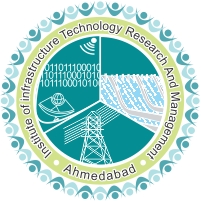A Study on Liquefaction Susceptibility of Road Infrastructure in Surat City
Authors :- S Thakur, P Bhanwar, T Dave
Publication :- Geohazard Mitigation. Lecture Notes in Civil Engineering, vol 192. Springer, 2021
Soil liquefaction has been a major cause of road infrastructure failure when saturated granular material is subjected to dynamic loading. The embankment underlying pavement experiences large deformation, lateral spreading, and loss of strength due to increased undissipated pore water pressure. After the devastating effects of the 2001 Bhuj earthquake, the Government of India has prioritized detailed geotechnical site characterization for all the construction sites in the seismic zones III, IV, and V. Considering the importance of geotechnical site characterization and ground response analysis, this paper presents the liquefaction potential study carried on field bore-log data for 30 different locations in Surat (Gujarat, India), which falls in seismic zone III. The data examination and analysis were carried out by the method prescribed by Boulanger and Idriss (CPT and SPT based Liquefaction triggering procedures, 2014) to obtain the factor of safety through SPT—N-based approach. Further, the results were analyzed using software named LiqIT based on the semi-empirical method of liquefaction assessment. Comparison of the results obtained from the methods considered during this study pointed out a good comparable match between both the methods. The analyses highlighted that out of 30 selected locations, 6 locations were prone to liquefaction. The study revealed that it is important to account for soils’ liquefaction susceptibility due to local site conditions to prevent infrastructure damage. Such studies also help decide on the requirement of active/passive remediation of sites prone to liquefaction.

